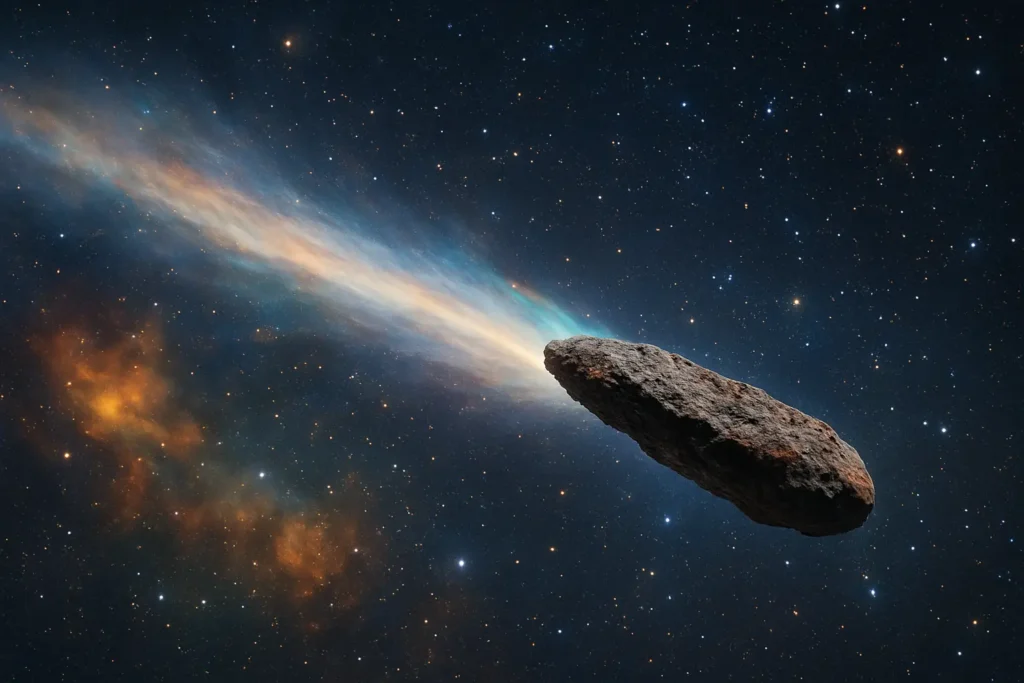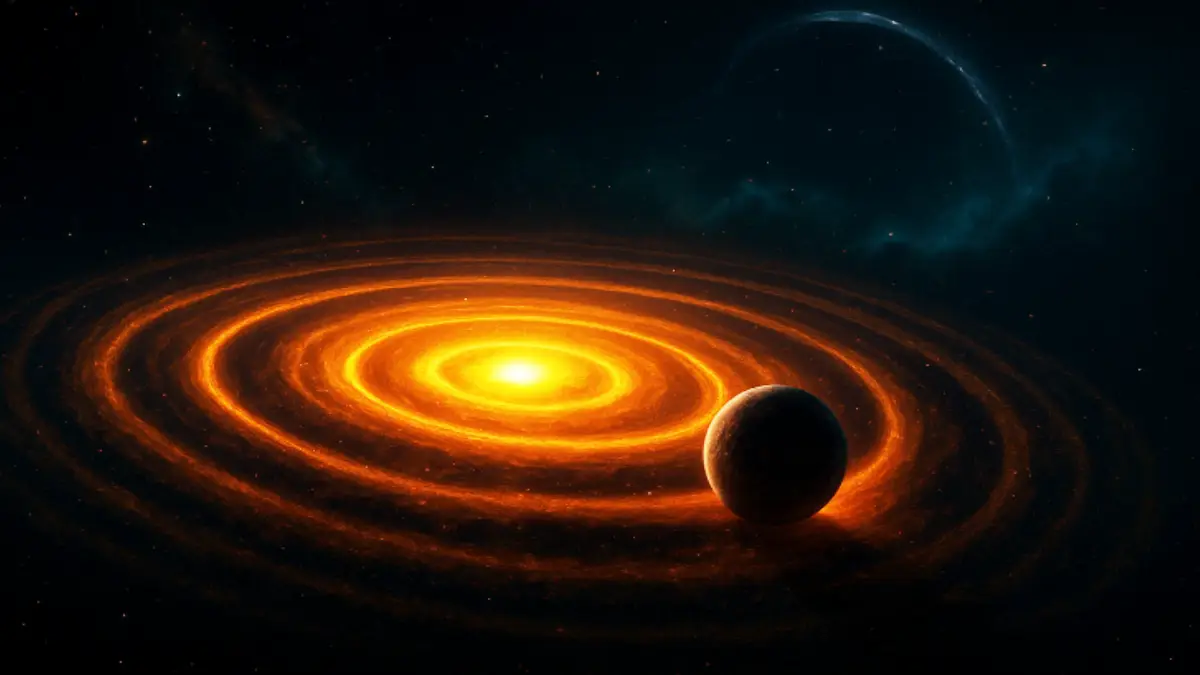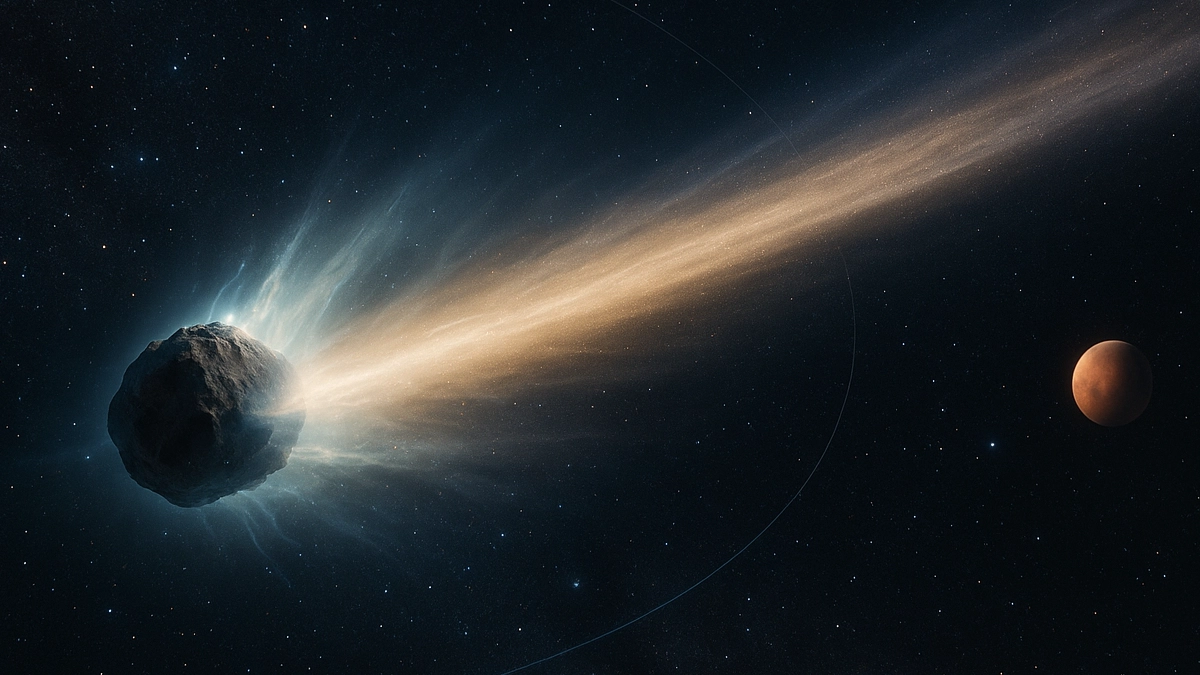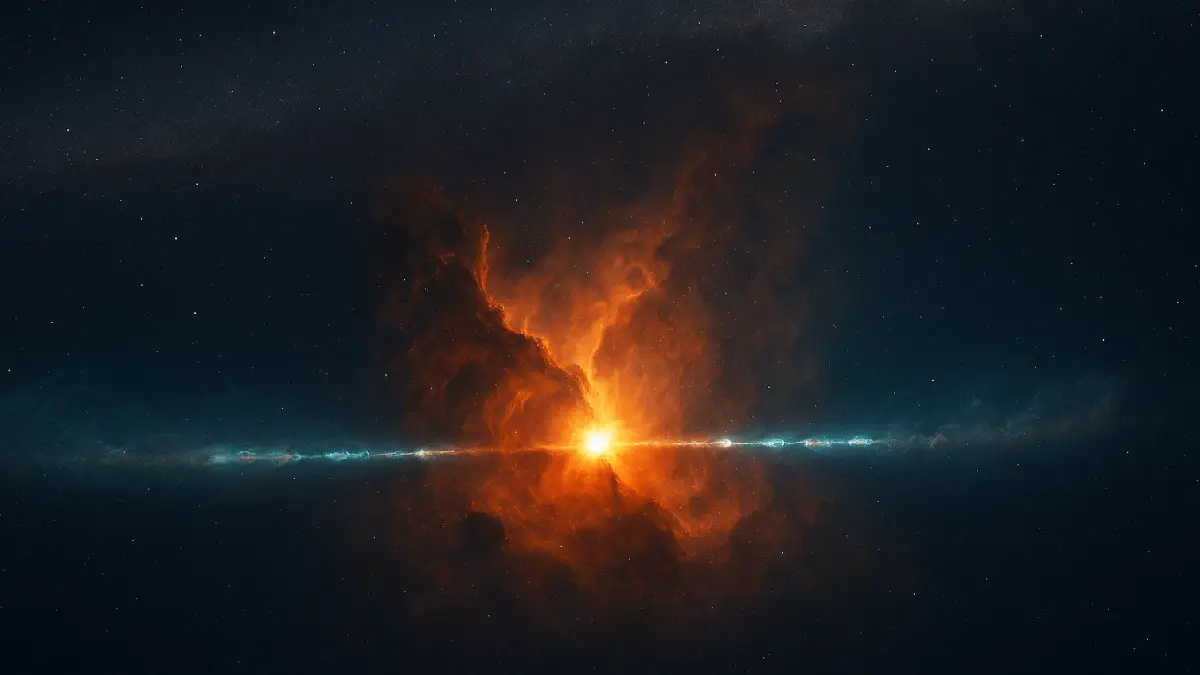Astronomers are reporting a cascade of strange findings about 3I/ATLAS, the third confirmed interstellar object and an active comet now racing through the inner solar system, including an unusually CO2-rich coma, a rapidly evolving tail, and record-setting transit speeds that eclipse prior interstellar visitors. (Source: NASA overview, Hubble update) Discovered on July 1, 2025 by the ATLAS survey in Chile, the object’s hyperbolic path and high inbound velocity leave no doubt about its extrasolar origin, while observations from space- and ground-based telescopes are revealing composition and behavior that both resemble and challenge known comet science. (Sources: NASA overview; Wikipedia background)
3I/ATLAS will pass safely through the solar system—no threat to Earth—but its brief visibility window has triggered a global observing campaign that is refining its nucleus size, chemistry, and dust activity in near-real time. (Source: NASA blog) As it approaches perihelion around late October at roughly 1.4 AU, scientists are tracking its outgassing and color changes to probe how interstellar ices respond to solar heating compared with typical solar-system comets.

What makes 3I/ATLAS interstellar
- The object follows a clearly hyperbolic, unbound trajectory with high excess velocity, confirming an origin beyond the solar system.
- Initial and archival detections from ATLAS, ZTF, and other facilities extended its observational arc, quickly firming up the interstellar classification.
Record speed and safe flyby
- Hubble and NASA reports indicate 3I/ATLAS is transiting the solar system at roughly 130,000 mph (about 209,000 km/h), faster than 1I/ʻOumuamua and 2I/Borisov, driven by accumulated gravitational interactions over eons.
- It will remain well beyond Earth’s orbit, with its closest solar approach near 1.4 AU and a minimum Earth distance of around 1.6–1.8 AU, ensuring no impact risk.
Unusually CO2-rich chemistry
- Multi-observatory datasets suggest a strikingly high carbon dioxide to water ratio in the coma—on the order of about 8:1—among the highest CO2 proportions measured, pointing to highly volatile-rich ices.
- NASA’s SPHEREx mission detected prominent CO2 gas alongside water ice, reinforcing the view that non-water volatiles dominate early activity at large solar distances.
Confirmed cometary activity and evolving tail
- Imaging from Hubble and major ground-based telescopes shows an active coma, dust plumes from the sunward side, and a growing tail consistent with sublimation-driven outgassing.
- Gemini South observations captured a brightening coma and a more pronounced tail in late August, indicating changes in particle sizes and dust production as insolation increases.
Size estimates and comparisons
- Hubble’s sharpened measurements constrain the nucleus to a diameter likely under 1 km, with an upper bound near 5.6 km, smaller than some early ground-based estimates but still significant for an interstellar visitor.
- Despite speculation about extraordinary size or artificial origin, mainstream analyses affirm a natural comet with properties within the broad diversity of known comets, albeit at the extreme end for CO2 richness and speed.
Strange optical behaviors and color
- Polarimetric and color reports compiled by researchers indicate reddening of the coma through July and unusually strong negative polarization at small phase angles, implying a mix of dark and icy dust akin to some trans-Neptunian objects.
- New images during recent observing windows hint at greenish emission as solar heating intensifies, likely from diatomic carbon (C2) fluorescence typical of some comets nearing the sun.
Where it may have come from
- Trajectory analyses and modeling efforts suggest a distant stellar origin, with current studies focused on back-tracing its hyperbolic path to potential source regions in the local spiral neighborhood. (Source: Universe Today overview)
- As with 1I and 2I, precise birthplace identification is challenging due to cumulative gravitational perturbations and observational uncertainties over long timescales.
What’s next
- The object will pass too close to the sun for observations in late September but should re-emerge by early December, opening a renewed window for coordinated spectroscopy and polarimetry.
- Scientists will target tighter constraints on nucleus size, production rates of CO2, H2O, CO, and minor species, and dust properties to benchmark how interstellar comets compare with Oort cloud populations—and what that means for planetary system formation.
Conclusion
3I/ATLAS is rewriting expectations for interstellar visitors with its unusually CO2-rich chemistry, rapid evolution of dust activity, and record transit speed—while remaining a safe and rare natural laboratory for comparative cometology. (Source: NASA overview; ScienceAlert synthesis) As it swings past perihelion and reappears for fresh observations, the focus will be on decoding its volatile inventory and dust physics to infer the conditions of its birth environment and refine models for how planetary systems seed and eject such icy interlopers.




